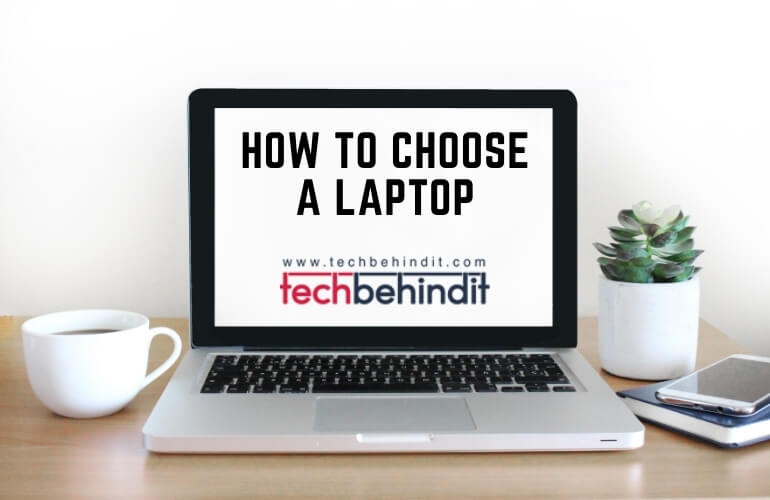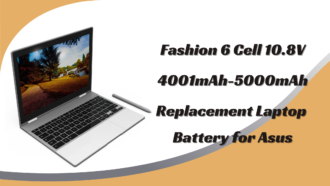How to Choose a Laptop for Graphic Design, 3D and Gaming
- 1 How to Choose a Laptop for Graphic Design Requirements
- 1.1 Operating System
- 1.1.1 MacOS
- 1.1.2 Windows 10
- 1.1.3 ChromeOS
- 1.1.4 Linux / Ubuntu
- 1.2 Processor
How to Choose a Laptop for Graphic Design: Compact enough to take you everywhere but versatile sufficient to run the most demanding applications, a laptop is the best tool for serious work or play at home and even on the road.
While tablets and smartphones are already popular, most people find that everything from writing a research paper to playing a video game works much better on a laptop.
When graphic designers look at the best laptops for graphic design, they have specific requirements to run the programs and software inherent to their industry.
No ordinary laptop will work – these graphic design laptops must be fast, responsive, and high-definition.
It would be best to have the US tools and hardware to get a definition of your skills.
How to Choose a Laptop for Graphic Design Requirements
Graphic design is a work of hardware requirement, and this requirement is given, in addition to the size of the files, by the requirements of the software (Adobe Photoshop, Illustrator, and Indesign) used. Until not so long ago, programs for graphic design could only be installed and controlled on a powerful computer, which was generally a desktop. The availability of powerful processors and graphics cards for mobile devices has led to the emergence of powerful laptops on the market.
Finding a suitable gaming laptop for Sims 4 can be challenging as it has nothing to do with buying a computer for gaming or general use. It would be best to have a laptop that’s light enough to carry around and powerful enough. It would be best to handle complex tasks.
Before we proceed with the decision-making process, consider your work type and budget. If you do complex 3D work, you will need a laptop with the best specifications. However, if most of your work is 2D, a low-to-mid-range computer may be enough for you.
In reality, it is not a question of recommending any—since the needs are subjective—but instead of establishing the elementary specifications that a laptop should meet for graphic design.
The most important specifications for graphic design are the operating system, CPU, memory or RAM, storage unit, screen type and size, and colour accuracy.
Operating System
Aside from the price, many people will choose a laptop due to the operating system it runs on. Most software, even for graphic design, is produced for Mac OS and Microsoft Windows. Of course, you need to ensure that your files are compatible with the software and operating system used by the company you work for.
Whether it’s your personal preference due to familiarity or recommendations from a colleague, laptops are generally available with four different operating systems:
MacOS
Apple laptops are packaged with MacOS, a stable and secure platform that is extremely easy to use, allowing you to focus all your time and effort on productivity.
The advantage of Macs is that their screens are usually very accurate in colours and have excellent quality. Displays tend to have better quality and colour accuracy compared to the average for PC equipment.
The system is highly optimized to work with hardware, so it will not consume too many resources, leaving you with more time for your work.
Since Macs have dominated the world of graphic design for many years, Mac OS has exclusive graphic design software.
Although Mac OS functions similarly to Windows 10, there are differences, such as an application dock instead of a Start menu. Mac users also have Siri instead of Cortana for voice assistance.
While many people tout the ease of use of Apple’s operating system, the biggest downside is that laptops with this operating system can be pretty expensive. An entry point for a cheap Mac would be to consider an older model refreshed.
Windows 10
For Windows, the variety is pervasive: Acer, Asus, HP, Lenovo, Huawei, Toshiba, MSI, Dell … All of them are brands with many years of experience behind them and dozens of models on the market.
Most of the models sold have Microsoft Windows installed. Therefore, this option will give you the most minor problems when choosing.
In addition, the large number of models available allows you to choose products in different price ranges. For Windows, the variety is pervasive: Acer, Asus, HP, Lenovo, Huawei, Toshiba, MSI, Dell … All of them are brands with many years of experience behind them and dozens of models on the market.
There is a lot of software available and drivers for adding design peripherals, such as drawing tablets, etc. There are also lots of compatible models and hardware components to choose from.
Windows is a heavy system that consumes many resources that will be reserved for it and not destined for what matters to you: your design software.
ChromeOS
A simple and secure system, Google’s ChromeOS is found on Chromebooks.
Although the interface resembles Windows, with an application menu, a desktop, and the ability to drag windows, the main browser is Google’s Chrome.
One downside to using ChromeOS is that some web apps don’t work offline. However, this is changing as newer high-end versions of the Chromebook can now run Android apps.
Chrome OS is incompatible, so graphic designers do not use this operating system. There are also fewer graphic designers who do not use these Operating system computers.
Linux / Ubuntu
You can install it on both Windows and MacOS computers. But in the first case, in the final price of the laptop, you will be paying Microsoft for the license not to use its operating system. Therefore, Microsoft’s best option is to opt for computers without an operating system or with a pre-installed GNU / Linux distribution.
Free license, free software (in most cases), and a secure, robust platform to dedicate every last second to productivity without worrying about viruses and other problems. You will also have many models and hardware components to choose from, therefore, maximum flexibility; you can even install it on a Mac. Even the heaviest distributions tend to consume fewer hardware resources than Windows, so you will have more free resources to dedicate to the software you work with.
It is complicated to use for some users, and not so much software is available (although there is no problem to work with, what’s more, sometimes there are so many alternatives to Windows programs that the most complicated task you will find is choosing which alternative to use.).
Processor
The processor is an indispensable and essential element in a computer, especially in a laptop for graphic design. As its name indicates, this section handles processing information, interpreting data, and executing orders given by and for system applications. The number of cores within a processor and the frequency with which they work define the speed at which the information is processed. Therefore, if we need a fast and efficient response, we must choose a processor with the appropriate capacity.
In the market, we can find processors with 2 to 32 cores; however, having 32 to work correctly is unnecessary. To explain it more simply, the cores are processors within the same processor, so if it has 4, we have four processors working independently. Each core can take over different tasks, translating into better performance and more efficient results.
The clock frequency determines the number of instructions that can be executed in a period; this capacity is measured in gigahertz (GHz), which can be compared to 5 GHz in powerful computers. It should be emphasized that the higher the clock frequency, the greater the energy consumption, so it is more convenient than it has multiple cores that divide the tasks, and thus avoid overheating or someone using Photoshop; only a 2 Hz processor is required. However, if you work with 3D software, a Core i7 HQ processor or higher is mended with a minimum of 2.5 GHz. Similarly, in this case, it is necessary to prefer a quad-core processor (or more) to a dual-core processor, which is quickly limited to managing 3D applications.

















